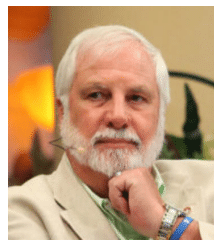“Six days later Jesus took with Him Peter and James and John his brother, and led them up on a high mountain by themselves. 2 And He was transfigured before them, and His face shone like the sun, and His garments became as white as light. 3 And behold, Moses and Elijah appeared to them, talking with Him,” (Matthew 17:1–3).
The majority of conditionalists deny the continuation of the human soul after a person’s physical death. They teach that upon a person’s cessation of physical life where the body dies, the spirit of the person either returns to God (whatever that means), or it ceases to exist. But if that is the case, then why is it that Moses and Elijah were both present and talking with Jesus after they died? They were not in a state of soul sleep (no activity) or non-existent. According to the majority of conditionalists, this cannot happen.
Checking with conditionalists
I wanted to know what the conditionalists would say about the Transfiguration of Christ and how Moses and Elijah conversed with him. To my surprise, I could not find any information from the following conditionalist sources that shed any light upon the conditionalist position. The sources I checked are as follows.
- rethinkinghell.com.
- Rethinking Hell: Readings in Evangelical Conditionalism, Cascade Books, an Imprint of Wipf and Stock Publishers. Kindle Edition:
- A Consuming Passion: Essays on Hell and Immortality in Honor of Edward Fudge, Pickwick Publications, an Imprint of Wipf and Stock Publishers. Kindle Edition.
- Fudge, Edward William. The Fire That Consumes: A Biblical and Historical Study of the Doctrine of Final Punishment, Third Edition, Cascade Books, an imprint of Wipf and Stock Publishers. Kindle Edition.
- Zondervan. Four Views on Hell (Counterpoints: Bible and Theology) Zondervan. Kindle Edition.
So, without discovering their position (though I’m sure a response to it exists somewhere), the only thing I could come up with is to say it was a vision.
The Transfiguration was a Vision
“As they were coming down from the mountain, Jesus commanded them, saying, ‘Tell the vision to no one until the Son of Man has risen from the dead,'” (Matthew 17:9).
Conditionalists might say that because the Transfiguration was a vision, it didn’t really happen in real-time, and Moses and Elijah were not consciously there. This way, they could maintain their belief in soul sleep and the termination of life upon the death of the physical body.
Does this work? No.
- It says that Jesus took Peter, James, and John and led them up to a mountain (v. 1).
- Jesus was transfigured before them. This was an actual occurrence upon Christ, not a vision (v. 2).
- In the Transfiguration, Moses and Elijah appeared to them and were talking with Jesus (v. 3). The context is of an actual event: Christ’s transfiguration.
- Peter said he wanted to make three tabernacles: one for Jesus, one for Moses, and one for Elijah (v. 4). This is because of what he saw during Christ’s actual transfiguration.
- A then cloud overshadowed them and God the Father spoke saying “This is my beloved Son, with whom I am well pleased; listen to him!” (v. 5).
- The disciples then fell facedown to the ground because they each heard the voice (v. 6).
- Jesus told them to “get up and do not be afraid,” (v. 7).
- They then lifted up their eyes and saw no one except Jesus alone (v. 8).
- Upon their descent from the mountain, Jesus told them not to tell the vision to anyone until after his resurrection (v. 9).
The context certainly supports the idea that Jesus, Peter, James, and John physically went up to the mountain, saw Jesus’ transfiguration, and observed him speaking with Moses and Elijah. Furthermore, God the Father spoke, which caused those present to fall to the ground. Jesus then told him not to be afraid. When they lifted up their eyes, they saw no one except Jesus. This means that Moses and Elijah were no longer visible. All of this is descriptive of something that actually happened, not a representation of something else.
To be clear, one other caveat in this argument might be that Elijah never died since he was taken to heaven. But then, what would the conditionalist say is the condition of Elijah in heaven? Is he in a physical, non-resurrected body? Nevertheless, Moses did die, and so the argument against the conditionalist position still holds true using the Transfiguration of Christ.
Conclusion
The Transfiguration of Christ (Matthew 17:1-8) with the appearance of Moses and Elijah stands in direct opposition to the often held conditionalist positions of soul sleep and the cessation of the existence of the soul/spirit upon a person’s physical death. Neither of those positions is possible since Moses and Elijah spoke with Jesus before their resurrection – which has not yet happened. Furthermore, though it is said to be a vision (v. 9), the vision was that of an actual occurrence. And if a conditionalist were to assert that the vision means it was not literal, aside from the obvious difficulties that the text contains which refute that idea, what then was God teaching Peter, James, and John by showing them that Moses and Elijah were alive and conscious and talking with Jesus? The conditionalist position makes no sense.





